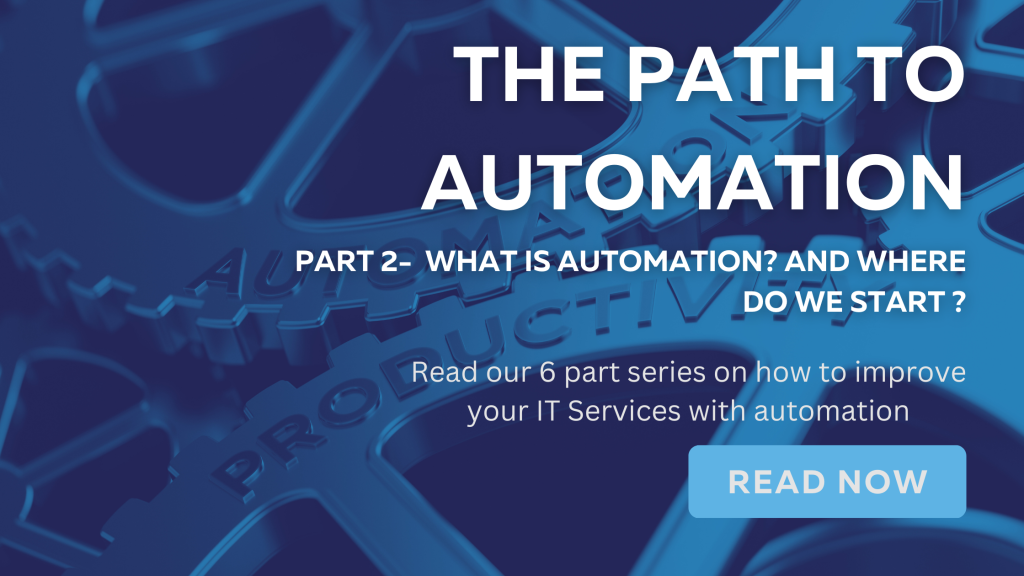The Path to Automation, part 2: What is automation? And where do we start?
Before you decide what you should automate, and what to prioritise, it’s vital to be clear on what we mean by automation and why it’s so important.
The whole point of automation is to provide business benefits to your organisation, usually by taking the strain off the humans in your IT service team. This could be in one of two ways:
- By providing your customers with a method of doing something themselves, such as password resets, distribution list updates, and so on
- By removing the need for human interaction as part of a process, such as using an email monitor to log tickets into your ticketing tool instead of constantly needing someone to be ‘on the mailbox’ waiting for requests to roll in.
We’ve chosen the examples above for a reason: they are all relatively simple to do. In recent years, automation has tended to become a complex idea that involves fancy new software and major process changes. But that doesn’t always have to be the case.
Often you can be better off making small and frequent changes that are more easily achievable. That way, you can get your team into the habit of continual service improvement. And you won’t leave your customers disappointed after waiting 12 months for a revolutionary new system that makes less of an impact than you promised.
So, now that’s clear… where do you actually start?
When it comes to automation, always begin with the data. Whenever we speak to an organisation about automating requests, we always check two things first:
- Do you have a ticketing-logging tool?
- Do you log every request?
If the answer to either of those questions is ‘no’, then we need to focus first on getting to a position where we understand how much demand your team is dealing with and what is taking up most of their time. And the only way to do that is to have a ticket-logging tool and log every request.
We can’t emphasise enough how important this is, as every decision your organisation makes should be based on real-world data – and not only that, but your real-world data. So stop worrying about what other companies are doing or what the latest trends are: your decision-making should be specific to your organisation in its current state.
That way you can be absolutely sure you’re making the right decisions for your organisation. Once you embrace this and it becomes part of your business culture, the opportunities for success will increase hugely.
What’s more, you’ll already have made your first step towards automation. You’ll then be ready to make a start on your automation journey. Click here to read the next article in our series.
This is part 2 in our series of articles about automation. To start at the beginning, click here.
We hope you’ve found this useful. If you do, please get in touch for a no-strings chat about how we can help your organisation reap the benefits of automation.



